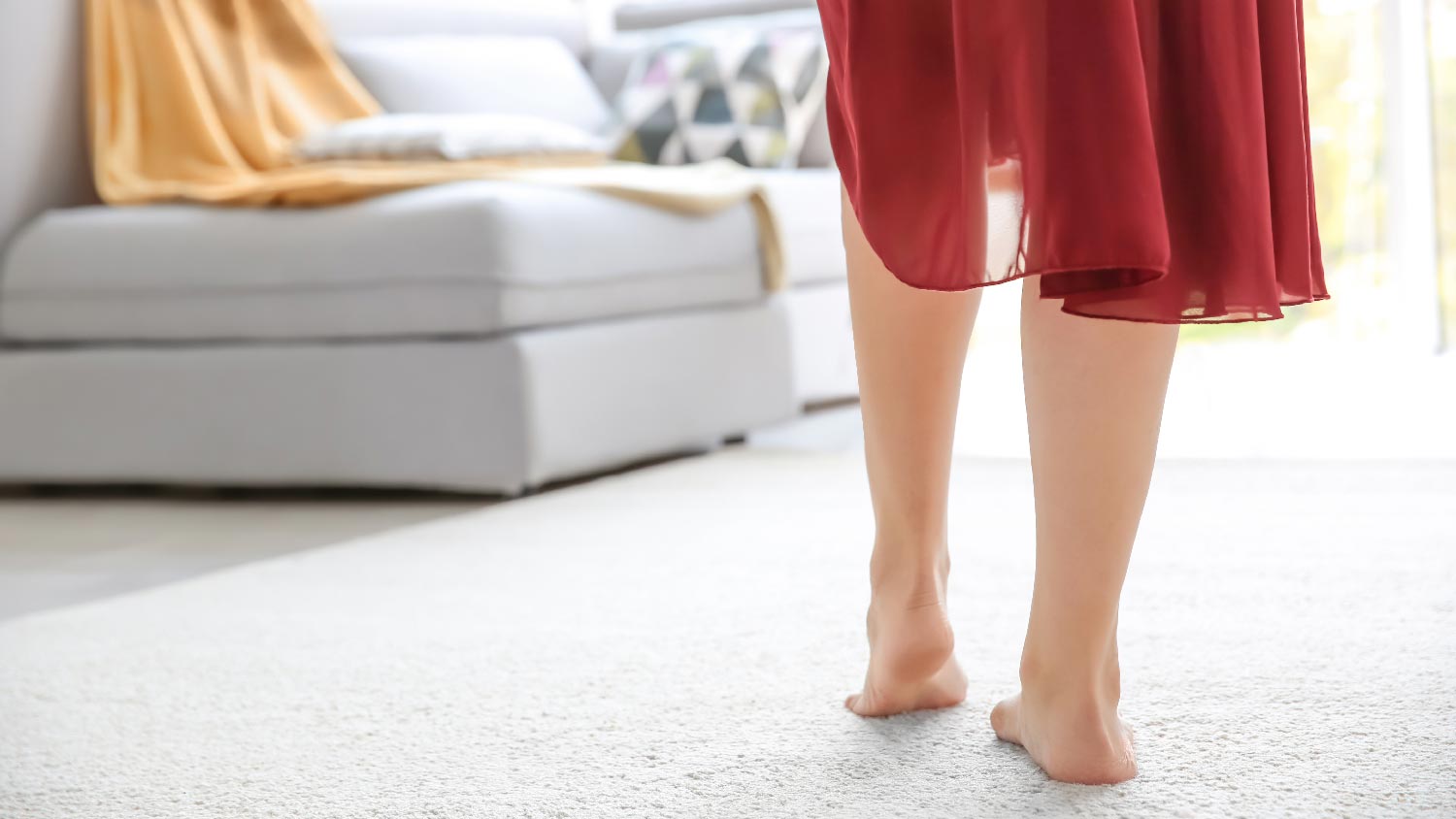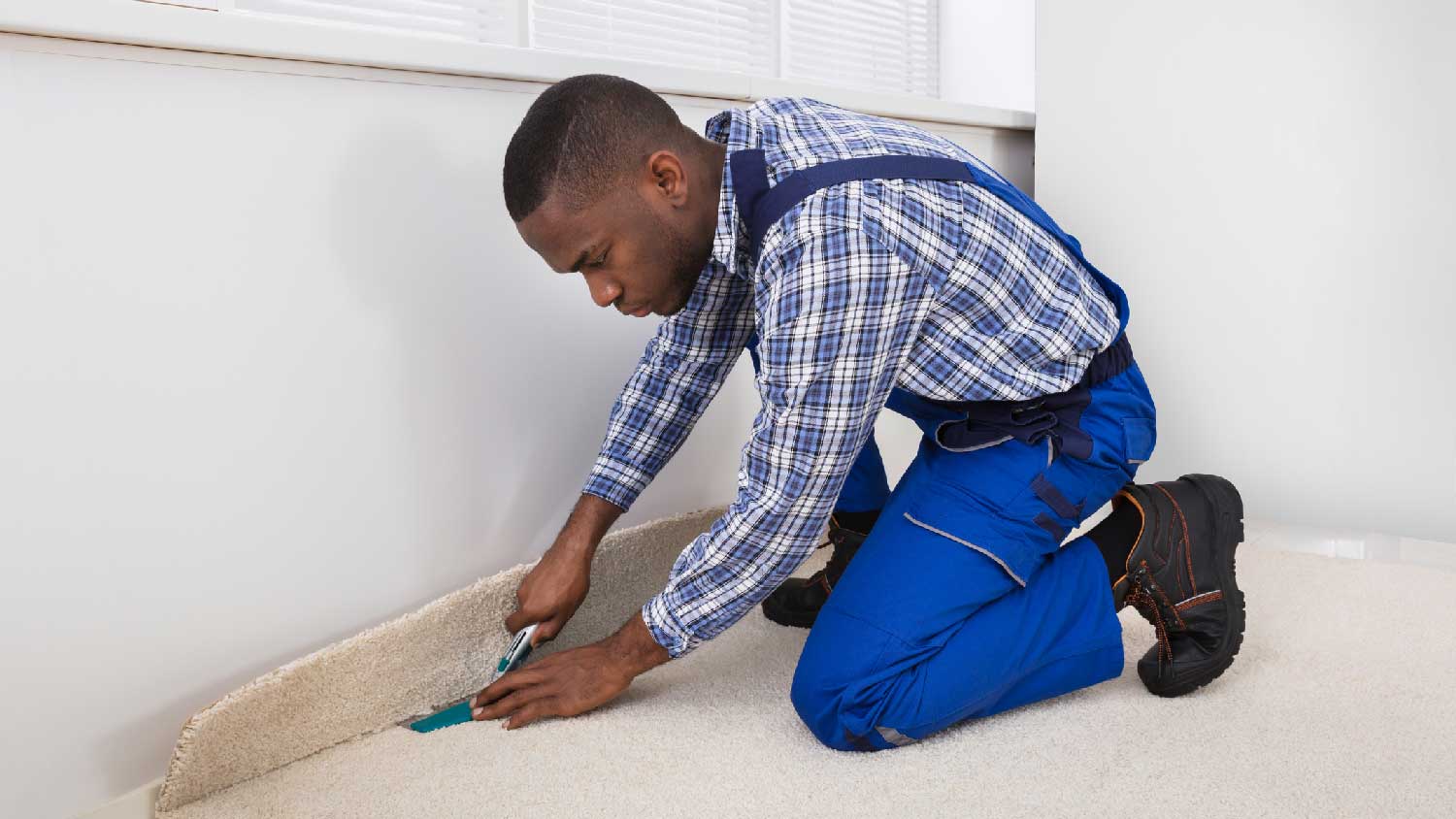
The cost to carpet stairs depends on the number of stairs, material choice, and staircase type. Read on to calculate your project expenses
Face the facts about cozy flooring


Carpet face weight is the weight of carpet per square yard measured in ounces.
A good carpet face weight for high-traffic areas is 40 ounces to 60 ounces per square yard.
Thirty ounces to 50 ounces per square yard is a good carpet face weight for low-traffic areas.
Comparing face weight, along with density and pile, matters when looking at two carpets of the same material and type.
In addition to the amazing, soft feeling carpet provides underfoot, the face weight of a carpet can indicate its quality, but only when comparing two similar carpets. Carpet face weight is the weight of the carpet measured in ounces per square yard. Learn more about the importance of carpet face weight, when and how to compare face weights, and what’s considered a good face weight.

Carpet face weight is the weight of the carpet measured in ounces per square yard, ranging from 20 to 100 ounces. Most residential carpets have face weights between 35 and 60 ounces. A higher face weight often means a more durable carpet, but face weight varies across carpet materials. Different materials weigh different amounts. The face weight of the carpet is just one factor in carpet quality and durability. Other aspects of carpet quality include pile height, density, and type of material.
Carpet face weight matters because it indicates the amount and heaviness of the carpet’s material. A higher face frequently correlates to a more durable and long-lasting carpet when comparing two similar carpets made of the same material. For example, if you compare two polyester low-pile carpets, a “good” carpet weight might be 40 ounces, while a “premium” carpet might have a face weight of 55 ounces. Comparing face weights of similar products can help you determine which one is better quality and more durable.
But when comparing distinct carpets, such as olefin versus polyester, face weight doesn’t matter because they’re two completely different materials with different quality standards. Lower face weights in certain materials can outlast higher face weights in a different material. For instance, a nylon carpet with a lower face weight can outperform a polyester carpet with a higher face weight.
A carpet retailer should encourage you to consider more factors than just carpet face weight. Several aspects impact carpet quality, including pile height and material.

A good face weight for a carpet ranges from 40 ounces to 60 ounces per square yard for high-traffic areas like living rooms, dining rooms, entryways, and hallways. A good face weight for low-traffic areas, such as a bedroom, home office, or den, ranges from 30 ounces to 50 ounces per square yard. Some premium carpets come in face weights of 65 to 100 and offer even more durability and quality. The carpet with the higher face weight tends to be more durable and long-lasting when comparing two carpets of the same material.
You can compare the face weights of two carpets by verifying they are the same material, have similar pile heights, and are the same type of carpet (cut or loop or cut-and-loop).
Example: You want to compare two frieze low-pile nylon carpets. Look at the face weight of the two carpets. The carpet with the higher face weight is likely more durable and will last longer. If you’re choosing carpet for a high-traffic area, such as a dining room or living room, consider the carpet face weight in your decision-making. If you’re buying carpet for a low-traffic area, such as a bedroom, face weight might not matter as much.
The cost of different carpet face weights depends mainly on the material, type of carpet, and pile height. A carpet with a higher face weight might cost more than one with a lower face weight of the same material. The cost of carpet ranges from $1 to $20 per square foot, with much of that cost difference depending on material.
Compare several types of carpets before deciding, and consider the room you’re working with. Low-traffic rooms rarely need the density and quality of higher-traffic rooms, like your living and dining room.

Installing carpet is tricky and requires quite a few tools. It takes practice to get the hang of stretching the carpet and attaching it to the tack strips. Unless you have experience installing carpet, a professional should install it to ensure even flooring, cohesive seams, and a durable, tight installation. Contact a local carpet installer to handle the job for you. You can save on costs by tackling the carpet removal yourself, but check with your contractor first.
From average costs to expert advice, get all the answers you need to get your job done.

The cost to carpet stairs depends on the number of stairs, material choice, and staircase type. Read on to calculate your project expenses

Carpet installation costs vary depending on the type of carpet, difficulty of the installation, and labor costs. We break it all down in this article.

Carpet repair costs range widely depending on the extent of damage, material type, and surface area that must be repaired. Here’s what you need to know before hiring a pro.

You can extend a carpet's life with regular cleaning, but one day, you will need a carpet replacement. These signs indicate when to replace your carpet.

If your carpet has seen better days, it might be time to give it some TLC. These questions to ask your carpet installer will help you prepare for the project.

You can install carpet over tile, but only in certain situations, and you must be careful to ensure the floor is even and stable before doing so.